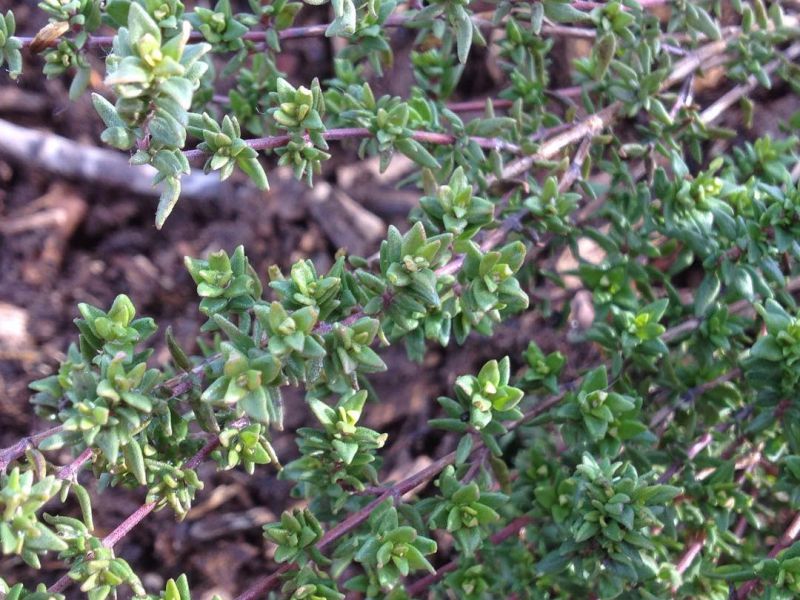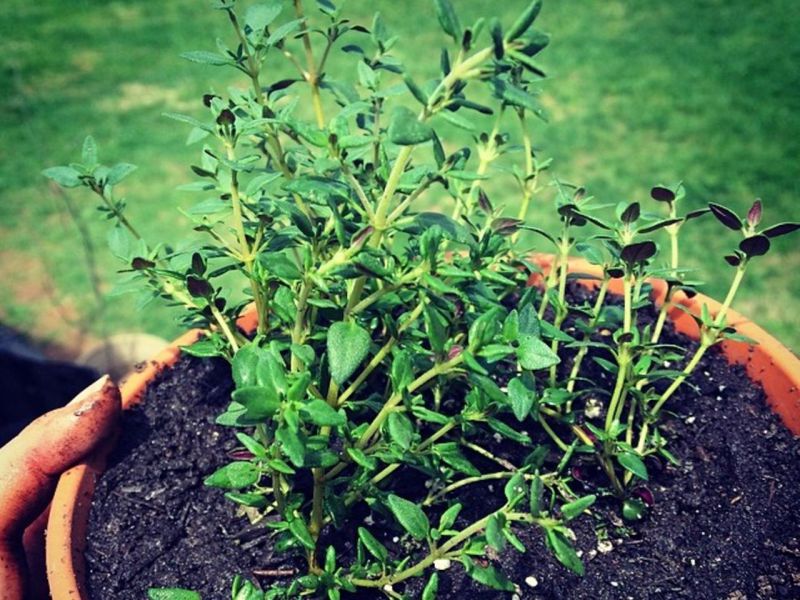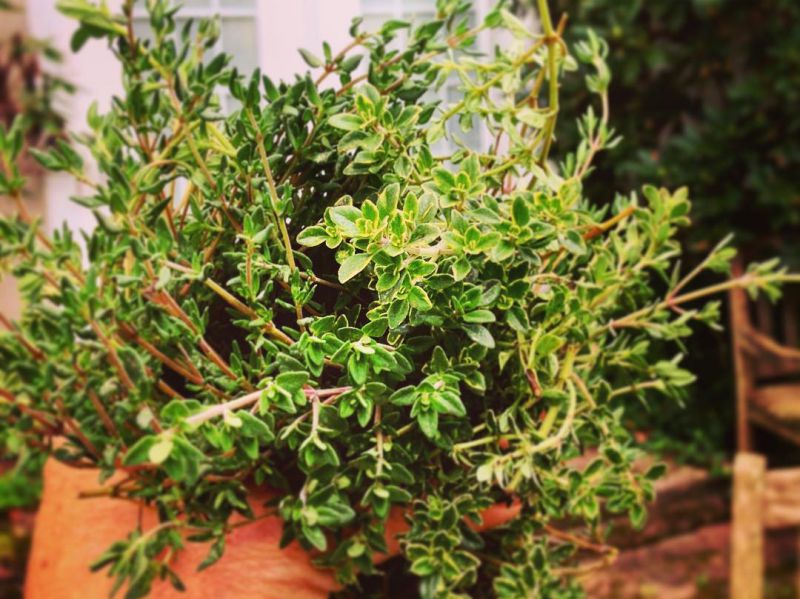Thyme is an herb that’s used in a wide selection of tasty dishes. However, many people today buy their thyme in the form of a dry and grounded powder. The fact is, thyme is much more flavorful when it’s fresh. However, most people don’t know what thyme looks like when it’s in it’s freshest form.
What is thyme?
To begin, if you’re unfamiliar with what thyme is, thyme is an herb that comes from the mint family. In fact, there are over 400 different varieties. This leafy plant grows low to the ground on bush and is used as an herb in several delicious dishes. In addition to this, thyme also can be used as a medicinal oil as well.
The use of thyme dates back to the Ancient Egyptians. Today, thyme is still commonly used in a wide array of dishes. Some of the dishes people use thyme in include meat-based dishes, vegetable dishes, cornbread and some desserts. Although there are hundreds of different kinds of thyme, the three most popular kinds include English thyme, German thyme and French thyme. So, what does fresh thyme look like?
What does English thyme look like?
 English thyme is used to enhance the flavor of foods like lamb, soups, sauces, beef, poultry, fish and stuffing. English thyme has its own specific look, and when you see it, you’ll know it. Typically, the visual characteristics of English thyme include:
English thyme is used to enhance the flavor of foods like lamb, soups, sauces, beef, poultry, fish and stuffing. English thyme has its own specific look, and when you see it, you’ll know it. Typically, the visual characteristics of English thyme include:
☆ Reddish stem
☆ Greenish leaves
☆ Pointed leaves
☆ Similar taste to German thyme
☆ Spreads out onto the ground as it grows
What does German thyme look like?
 German thyme is commonly used in Bouquet Garni and aromatic dishes. In addition to this, German thyme also adds top the flavor of foods like cheeses, soups, sauces, meats and even eggs too. The characteristics of German thyme include:
German thyme is commonly used in Bouquet Garni and aromatic dishes. In addition to this, German thyme also adds top the flavor of foods like cheeses, soups, sauces, meats and even eggs too. The characteristics of German thyme include:
☆ No red stem
☆ Rounded leaves
☆ Greenish leaves
☆ Similar taste to English thyme
☆ Grows tall and upward
What does French thyme look like?
 If you’ve ever had French cuisine, then you’ve more than likely enjoyed the taste of French thyme. French thyme is most commonly used in French dishes, but it can be used in other kinds of food as well. The characteristics of French thyme include:
If you’ve ever had French cuisine, then you’ve more than likely enjoyed the taste of French thyme. French thyme is most commonly used in French dishes, but it can be used in other kinds of food as well. The characteristics of French thyme include:
☆ Pointy leaves – pointier than English thyme
☆ Reddish stem
☆ Slow growing
☆ Grows better in pots rather than a garden
Where are the proper places to grow thyme?
Now that you know what quality thyme looks like, it’s also important to understand the proper growing techniques to ensure your thyme grows right and has the appearance it’s suppose to. Like mentioned above, French thyme grows better in a pot. However, like the rest of the different types of thyme, it can also grow almost anywhere. This includes gardens, along walkways, in greenhouses and a wide selection of other places.
People who are interested in growing thyme should start their plants indoors before spring arrives. Once the last frost has hit and the average temperature has increased, you can then plant your thyme where you want. In addition to this, your seeds should be planted in soil that drains well and has a minimum pH level of at least 7.0. If your pH levels are a little low, a quick solution is to simply add some sort of an organic garden lime product.
Another important aspect to growing quality thyme is using a slow releasing fertilizer. You can buy slow releasing fertilizer at most garden centers or home improvement stores. Although there are many products on the market, Miracle-Gro Shake ‘n Feed Continuous Release All Purpose Plant Food is one of the best products on the market.
Additional tips when growing thyme
- Sunlight: Thyme needs lots of sunlight. Make sure you plant your thyme away from shaded areas and if grown indoors, near windows.
- Watering: Thyme is resistant to drought. So, you’ll only want to water your thyme plants when the dirt is completely dry.
- Spacing: It’s essential to plant your crops at least 12 to 24 inches apart.
Above all, make sure that you have patience and remember that growing thyme can be a little difficult sometimes. If you stick with it and apply the tips listed above, your thyme will more than likely continue to grow strong all summer long.
Harvesting your thyme
The best time to harvest thyme is when the flowers on the plants begin to blossom. However, you can technically harvest it anytime after it sprouts. When you do go to harvest your thyme, follow these easy steps.
- Equip yourself with a pair of sharp scissors.
- Grab your thyme plant(s) near the middle.
- While holding your thyme plant(s), cut your plant(s) at the base.
- Rinse your thyme with clean water.
- After you have cut your thyme plants, you can refrigerate it, freeze it or even juice it. It’s important to note that to keep it fresh, you’ll want to refrigerate or freeze it a few hours after you pick it.
- How to Get Rid of Wood Mites - September 24, 2020
- Can You Have Stained Doors With Painted Trim? - May 27, 2020
- Is Duct Tape Flammable? and Other Burning Questions About Duct Tape - April 2, 2020
